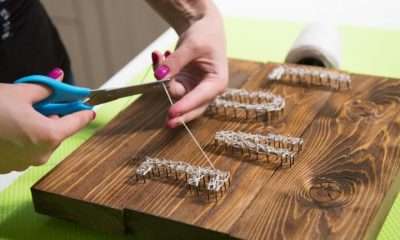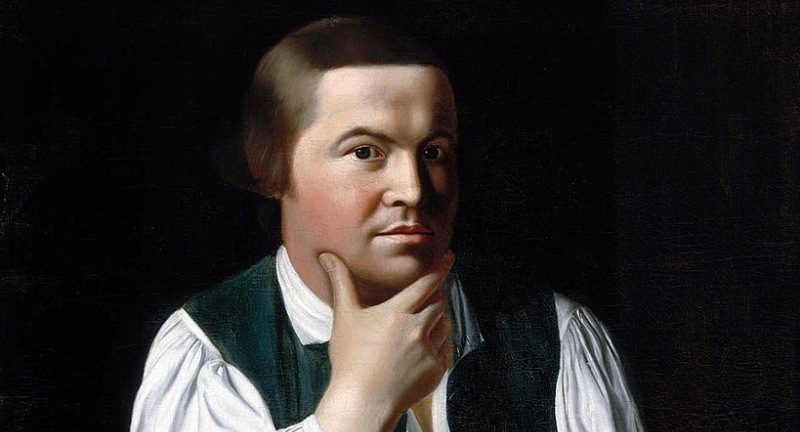
Shutterstock
Think you know everything about the penny? Think again! This tiny coin has a big story filled with fun facts that might surprise you. From its ever-changing design to some quirky trivia, the penny is full of surprises.
Whether you’re a coin collector or just curious, there’s plenty to learn about this little piece of currency hiding in your cup holder and couch cushions. So, let’s dive into some fun facts about the penny that will make you see it in a whole new light.
Paul Revere Did More Than His Ride

Wikipedia
Paul Revere, famous for his midnight ride, also made significant contributions to early American coinage. As a skilled silversmith, Revere produced copper sheathing for naval ships and other essential materials for the young American nation. His involvement in the minting process helped establish a reliable and trusted currency system at a time when America was asserting its independence. Revere’s multifaceted talents highlight the diverse contributions of Revolutionary War figures beyond their military roles.
A Woman Was The Original Face

Shutterstock
Before Abraham Lincoln’s portrait was adopted, Lady Liberty’s image was a common feature on American coins, including the penny. The designs varied over the years, but Liberty often appeared wearing different headpieces, such as a Phrygian cap or a Native American headdress, as seen on the Indian Head penny. These depictions of Liberty symbolized the nation’s values of freedom and democracy. The choice to replace Liberty with Lincoln’s image in 1909 represented a shift towards honoring specific historical figures on U.S. coins.
More Pennies Than Milky Way Stars

Shutterstock
Since the U.S. Mint began issuing one-cent coins in 1793, it has produced over half a trillion pennies. This immense number far surpasses the estimated number of stars in the Milky Way galaxy, which is about 100 to 400 billion. Despite discussions about discontinuing the penny due to its low purchasing power and production cost, it remains one of the most minted coins in U.S. history. The vast production highlights the penny’s persistent role in American culture and everyday transactions.
Americans Didn’t Coin ‘Penny-Pinching’

Shutterstock
The term “penny-pinching,” often associated with frugality or stinginess, didn’t originate in the United States. It was first used in Scotland and England, where the word “penny” has long been part of the local currency. The phrase reflects the cultural value of saving and careful money management, traits commonly admired across various societies. Despite its British origins, “penny-pinching” has become a well-known term in American English, highlighting the cross-cultural influence of language.
The “Large Cents”
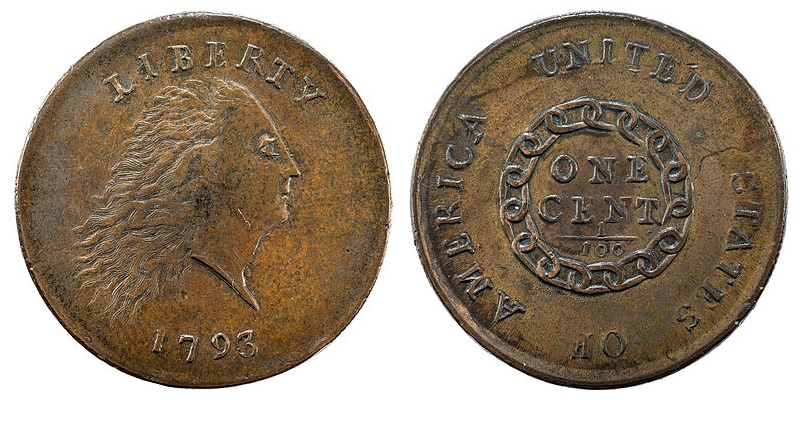
Wikipedia
The first U.S. pennies, known as “large cents,” were produced in 1793, just a year after the establishment of the U.S. Mint. These early coins were significantly larger than today’s pennies, measuring about the size of a modern half-dollar. They featured a design of Lady Liberty with flowing hair on one side and a chain of 15 links, representing the 15 states in the union, on the other. Despite their unwieldy size, these pennies quickly became a staple in American commerce, laying the foundation for the nation’s currency system.
A Penny Or A Dime?
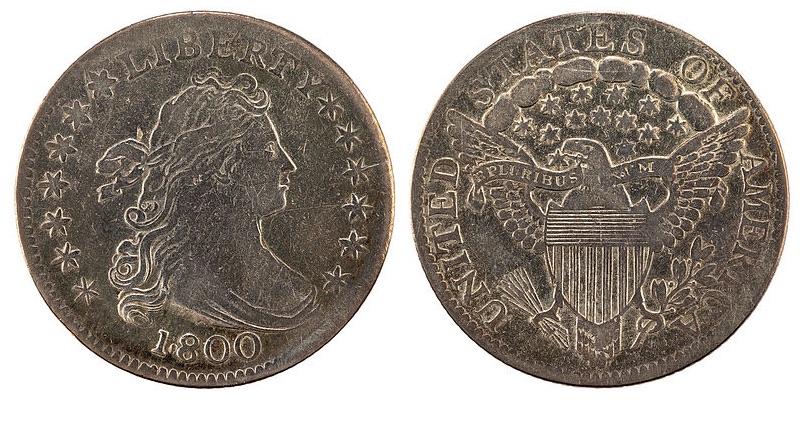
Wikipedia
In the early 19th century, the similarity in size and weight between pennies and dimes often led to confusion. Both coins were nearly the same diameter, making it easy for people to mistake one for the other during transactions. This similarity caused practical issues, prompting the U.S. Mint to make distinct changes in coin design to prevent mix-ups. Today, the penny and dime are easily distinguishable, not only by their size but also by their thickness and edge design.
Find a Penny, Pick It Up….

Shutterstock
The saying “Find a penny, pick it up, and all day long you’ll have good luck” is a widely known superstition with ancient origins. The belief in the penny’s luck stems from the idea that metal, once considered a gift from the gods, could protect against evil spirits. In early times, finding any form of metal was seen as a sign of prosperity and protection. Over the centuries, this belief evolved, and the penny became a symbol of good fortune, linking small acts with potential for greater luck throughout the day.
White Cents
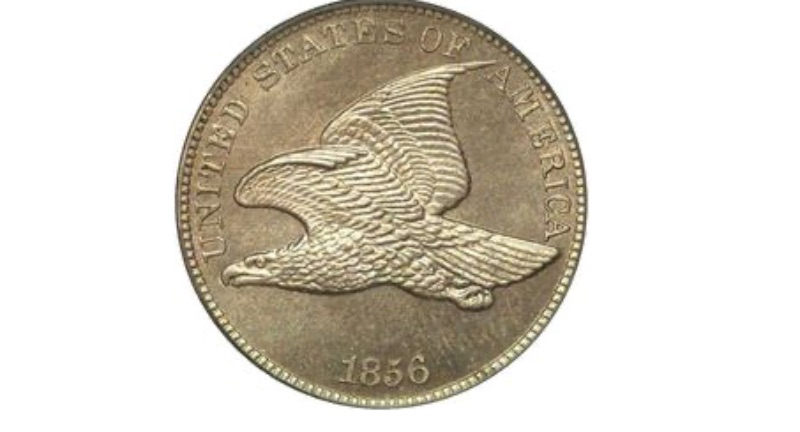
Pinterest
During the Civil War, the value of copper increased, prompting a shift in the penny’s material. In 1856, the U.S. introduced a new design called the “Flying Eagle cent,” made from a copper-nickel blend that gave the coin a whitish appearance. These “white cents” were smaller and lighter than their all-copper predecessors, making them more practical for everyday use. However, the copper-nickel composition was short-lived, and by 1864, the penny returned to a primarily copper composition, which has been mostly retained since then.
The First President Wasn’t The First On A Coin

Shutterstock
Although George Washington was the first U.S. President, he was not the first president to be featured on an American circulating coin. That honor went to Abraham Lincoln, who appeared on the penny in 1909, marking the 100th anniversary of his birth. Before Lincoln’s portrait graced the coin, the penny typically featured symbolic figures like Lady Liberty. The introduction of Lincoln’s image on the penny marked a shift in U.S. coinage, emphasizing the recognition of historical figures over allegorical symbols.
Foreign Money Phased Out

Shutterstock
In the early days of the United States, foreign coins were widely accepted in everyday transactions. Coins from countries like Spain, France, and England were used alongside American currency, as the U.S. was still establishing its own monetary system. The Coinage Act of 1857 ended the legal tender status of foreign coins, a move closely linked to changes in the penny’s design. This shift helped solidify the identity of U.S. currency, promoting national sovereignty and a unified economic system.
Steel Pennies

Shutterstock
Initially, U.S. pennies were made entirely from copper, which gave them their distinctive reddish-brown color. However, during World War II in 1943, the penny’s composition temporarily changed to zinc-coated steel to conserve copper for the war effort. This gave the penny a unique silver appearance, making it stand out among other years. After the war, the penny returned to its copper composition, but the 1943 steel pennies remain a collectible item due to their rarity and historical significance.
100th Anniversary Of Lincoln’s Birth
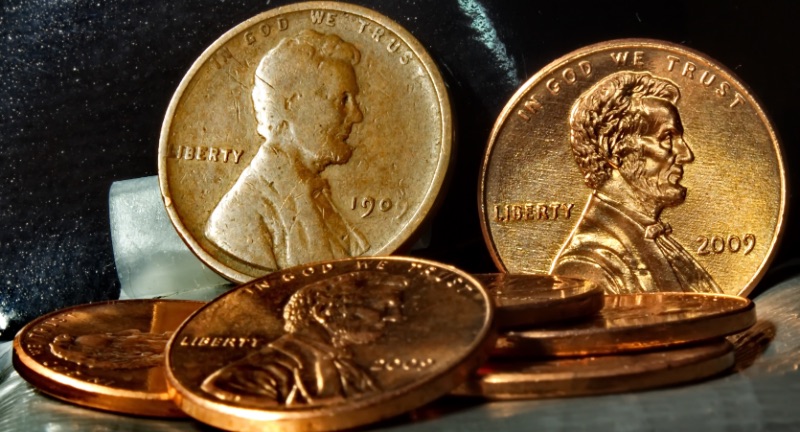
Shutterstock
In 1909, the U.S. Mint issued the Lincoln penny to commemorate the 100th anniversary of Abraham Lincoln’s birth. This marked the first time a historical figure, rather than a symbolic representation, appeared on a circulating American coin. Designed by sculptor Victor David Brenner, the Lincoln penny also introduced the phrase “In God We Trust” on U.S. coins for the first time. Over a century later, Lincoln’s portrait remains on the penny, making it the longest-running design in American coinage history.
Pennies Made from Bronze

Shutterstock
From 1864 to 1962, pennies were primarily composed of bronze, a blend of 95% copper and 5% tin and zinc. This composition gave the penny its distinctive reddish-brown color, making it easily recognizable. The bronze penny became a familiar sight in American life for nearly a century, enduring through times of economic change and world wars. In 1962, the U.S. Mint shifted to using copper-plated zinc for pennies to reduce production costs, a composition that continues today.
Penny Production Peaks

Shutterstock
The 1980s saw a peak in penny production, with billions of pennies minted each year to meet public demand. In 1982 alone, over 17 billion pennies were produced, reflecting the coin’s widespread use in everyday transactions. Despite a decline in production since then, pennies remain one of the most minted coins in the U.S.
The Wheat Penny Design

Shutterstock
The reverse side of the Lincoln penny originally featured two ears of wheat from 1909 to 1958. Known as the “wheat penny,” this design was a nod to America’s agricultural roots and symbolized prosperity and growth. In 1959, the wheat ears were replaced by the Lincoln Memorial design to commemorate the 150th anniversary of Lincoln’s birth. Despite this change, wheat pennies are still highly valued by collectors for their historical significance and distinctive look.
The Lincoln Memorial Penny

Shutterstock
In 1959, the U.S. Mint introduced a new design for the penny’s reverse side, featuring the Lincoln Memorial. Created by Frank Gasparro, this design honored both Lincoln’s legacy and the national monument dedicated to him in Washington, D.C. The Lincoln Memorial penny remained in circulation until 2008, becoming one of the longest-running coin designs in U.S. history. This iconic image reinforced Lincoln’s enduring presence in American culture and currency.
A Special Penny for a Special Anniversary

Shutterstock
To celebrate the 200th anniversary of Abraham Lincoln’s birth in 2009, the U.S. Mint released four new reverse designs for the penny. Each design represented a different stage of Lincoln’s life: his birthplace in Kentucky, his formative years in Indiana, his career in Illinois, and his presidency in Washington, D.C. These commemorative pennies were popular among collectors and the public alike, highlighting Lincoln’s lasting influence on American history. The designs provided a unique way to educate people about Lincoln’s life and legacy.
The Zinc Revolution

Shutterstock
In 1982, rising copper prices led the U.S. Mint to change the penny’s composition to 97.5% zinc with a thin copper plating. This shift made the penny less expensive to produce, helping to manage costs associated with minting billions of coins annually. Although the change altered the weight and feel of the penny slightly, the overall design remained the same, ensuring continuity in appearance. Today, most pennies in circulation are made with this zinc-based composition, reflecting the economic realities of modern coin production.
The Most Recoginzed Image Worldwide

Shutterstock
The decision to feature Abraham Lincoln on the penny in 1909 not only honored the beloved president but also introduced the concept of depicting real historical figures on everyday currency. Before Lincoln’s image appeared, U.S. coins commonly featured symbolic figures like Lady Liberty. Lincoln’s portrayal on the penny set a precedent for future coins to commemorate presidents and notable Americans, such as Thomas Jefferson on the nickel and Franklin D. Roosevelt on the dime. Today, Lincoln’s portrait on the penny is one of the most recognized coin images worldwide, symbolizing leadership and legacy.
The Debate Over the Penny’s Future

Shutterstock
In recent years, there has been growing debate over whether the penny should be discontinued due to its declining purchasing power and the cost of production. Critics argue that the penny is no longer necessary for everyday transactions and that eliminating it would save millions of dollars annually. Supporters, however, believe the penny holds historical and sentimental value and plays a practical role in cash transactions, especially in rounding off prices. The debate continues, reflecting the complexities of modern currency management and the balance between tradition and efficiency.
The Penny in Popular Culture

Shutterstock
The penny has a notable place in American popular culture, often symbolizing thrift and value. Phrases like “a penny for your thoughts” suggest that even a small amount of money can invite meaningful conversation. Similarly, sayings like “penny-wise, pound-foolish” warn against being overly cautious with small amounts of money while neglecting larger financial considerations. The penny’s image, particularly Lincoln’s profile, is widely recognized and frequently appears in art, music, and film, underscoring its cultural significance beyond just monetary use.
The Smallest Denomination

Shutterstock
Although the penny is the smallest denomination of U.S. currency, it has played a significant role in American economics. With millions of pennies circulating each day, they are a common part of everyday transactions, from buying small items to receiving change. Pennies are also frequently used in charitable collections, such as penny drives, where their abundance makes them effective for fundraising efforts. Despite debates over its future, the penny remains a symbol of practicality and tradition in U.S. currency.
Make A Wish

Shutterstock
Throwing pennies into fountains or wells as a way to make a wish is a tradition that dates back centuries. This practice has roots in ancient customs, where water was considered a sacred element, and people would make offerings to deities to bring good fortune. Today, pennies are commonly tossed into wishing wells at tourist attractions, blending historical tradition with modern-day rituals. This act of tossing a penny symbolizes hope, prosperity, and the continuation of a cultural tradition that spans generations.
Conclusion
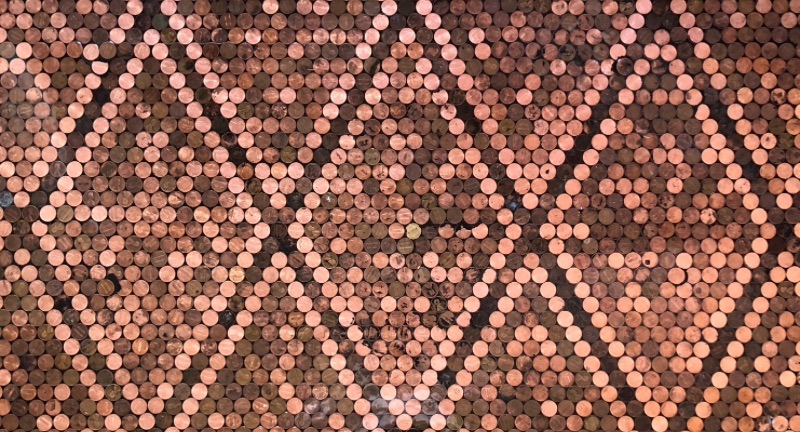
Shutterstock
The penny may be small, but it’s packed with fun and surprising facts. From the copper it once contained to the hidden initials of its designers, there’s more to this coin than meets the eye. It’s changed designs multiple times and even has superstitions surrounding it. Despite its low value, the penny remains a beloved part of American life. So next time you see a penny on the ground, remember it’s more than just spare change.

 Entertainment3 weeks ago
Entertainment3 weeks ago
 Celebrity News5 days ago
Celebrity News5 days ago
 Celebrity News5 days ago
Celebrity News5 days ago
 Celebrity News1 month ago
Celebrity News1 month ago
 News5 days ago
News5 days ago
 News6 months ago
News6 months ago
 Entertainment2 months ago
Entertainment2 months ago
 Celebrity News3 weeks ago
Celebrity News3 weeks ago































